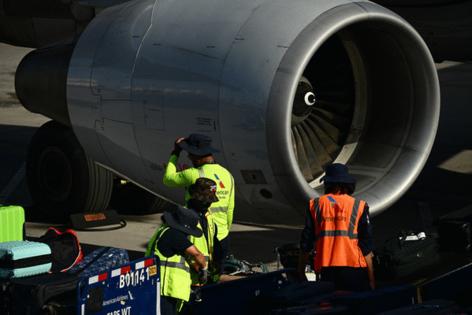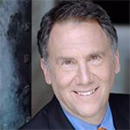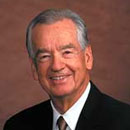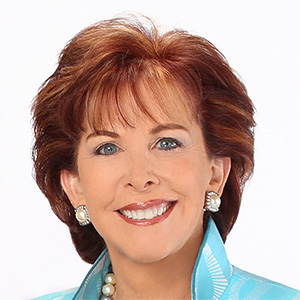Jon Talton: Climate change to drive US migration, change regional makeup
Published in Business News
The United States is seeing a change in its regional demographics, and it is not a result of typical mobility and migration driven by work pursuits.
The urban scholar Richard Florida recently noted the trend.
“The North is losing fewer people, and the South isn’t gaining like it once was,” Florida posted on X. “Net domestic migration to the South was down almost 38%. Domestic migration to the Midwest is up about 60% though it’s still negative in absolute terms.”
In October 1967, the high temperature in my hometown of Phoenix was 88 degrees, and the low was 53 degrees. By contrast, according to AccuWeather, the highs in October this year ranged from 102 degrees early in the month to 91 degrees. October’s lows this year ranged from 73 to 64 degrees.
Such high temperatures in autumn came because hundreds of thousands of acres of some of the finest oranges, grapefruits, lemons, tomatoes and other prized produce were replaced by sprawl. Our neighborhood north of downtown was graced by cooling lawns, natural shade trees, flower beds and hedges in this natural oasis amid the wettest desert on earth.
Although the boosters will deny it, Phoenix is unsustainable, as are so many Sunbelt cities, such as Houston, New Orleans, Miami and Charlotte, North Carolina. The only question is how long they have until the rough justice of human-caused climate change kicks in.
And migration poses serious policy concerns for Seattle and the Northwest.
This comes at an ominous moment in world history, when the president denies human-caused climate change and calls it a “con job.”
His opinion is at odds with 97% of climate scientists.
The New Yorker Magazine’s Elizabeth Kolbert, who’s written about a warming planet for decades, wrote earlier this year that since President Donald Trump “was inaugurated (again), his Administration has taken thirty-three climate-backtracking actions. Most of these have been in the form of executive orders, and most of these E.O.s have been aimed at either boosting fossil-fuel production or crippling programs that might reduce fossil-fuel use.”
The planet is growing warmer, with fossil fuels burning at higher rates, with dangerous risks. And a Pew Research Center poll shows majorities of Americans support stricter environmental rules.
According to CNN, the “Billion-Dollar Weather and Climate Disasters Database, which the Trump administration ‘retired’ in May, has relaunched outside of the government using the same methodology.”
Tracking the financial costs of extreme weather events in America, the database is now part of the research nonprofit Climate Central. It shows that the first six months of this year have cost more than $101 billion in losses.
In Washington, my colleagues Conrad Swanson and Isabella Breda reported this year that the legislative session was focusing on what state Rep. Joe Fitzgibbon, D-Burien, called “implementation.”
In short: ensuring the state’s present initiatives and policies — such as the 2021 Climate Commitment Act, as well as such bills to ease heat risk in schools, better anticipate wildfire dangers in rural areas and move the cost of recycling from customers to manufacturers — function at peak performance.
The Climate Commitment Act includes such measures as a cap-and-invest program to reduce statewide greenhouse gas emissions, helping Washington achieve its goal of cutting the emissions behind a warming planet. The state hopes to link its carbon market with those in California and the Canadian province of Québec.
Another essential part of combating climate change is better alternatives to driving, no matter the magical thinking about electric or flying cars. I prefer to use the Amtrak Cascades to travel to Portland or Vancouver, British Columbia. And next year, the state-supported corridor will receive new Airo train sets operating on the Eugene, Oregon, to Vancouver route, according to The Urbanist.
An essential next step, before the aspiration of high-speed trains, is to electrify the entire system, operating on Cascadia’s abundant hydropower. Every form of transportation is subsidized, flying and driving — major sources of greenhouse emissions most of all.
In Seattle, it’s disappointing that the First Avenue Streetcar is still unbuilt, leaving people with fewer options, and sandbagging the intentions of the Center City Connector linking First Hill, Chinatown International District, Pike Place Market and South Lake Union. Modern streetcars are successful across the world; China has completed 30,000 miles of high-speed passenger rail while the United States only has a few short segments.
Among the other costs of climate change are its risks to Washington’s $14 billion agriculture sector.
Critics say we shouldn’t be “alarmist” in discussing human-caused climate change. But refusing to admit the risks is unacceptable.
Climate refugees are a worldwide issue. A warming planet could force the dislocation of billions in coming decades, according to sources such as London’s Institute for Economics and Peace — which should be of concern for an administration that’s so anti-immigrant.
It’s essential that Washington and Seattle prepare for more refugees in the coming decades. Otherwise, the progress we’ve made on climate, transportation and urban-growth boundaries could be undone by the far right fleeing states such as Arizona.
For some, a warming Midwest might be more enticing.
©2025 The Seattle Times. Visit seattletimes.com. Distributed by Tribune Content Agency, LLC.












Comments